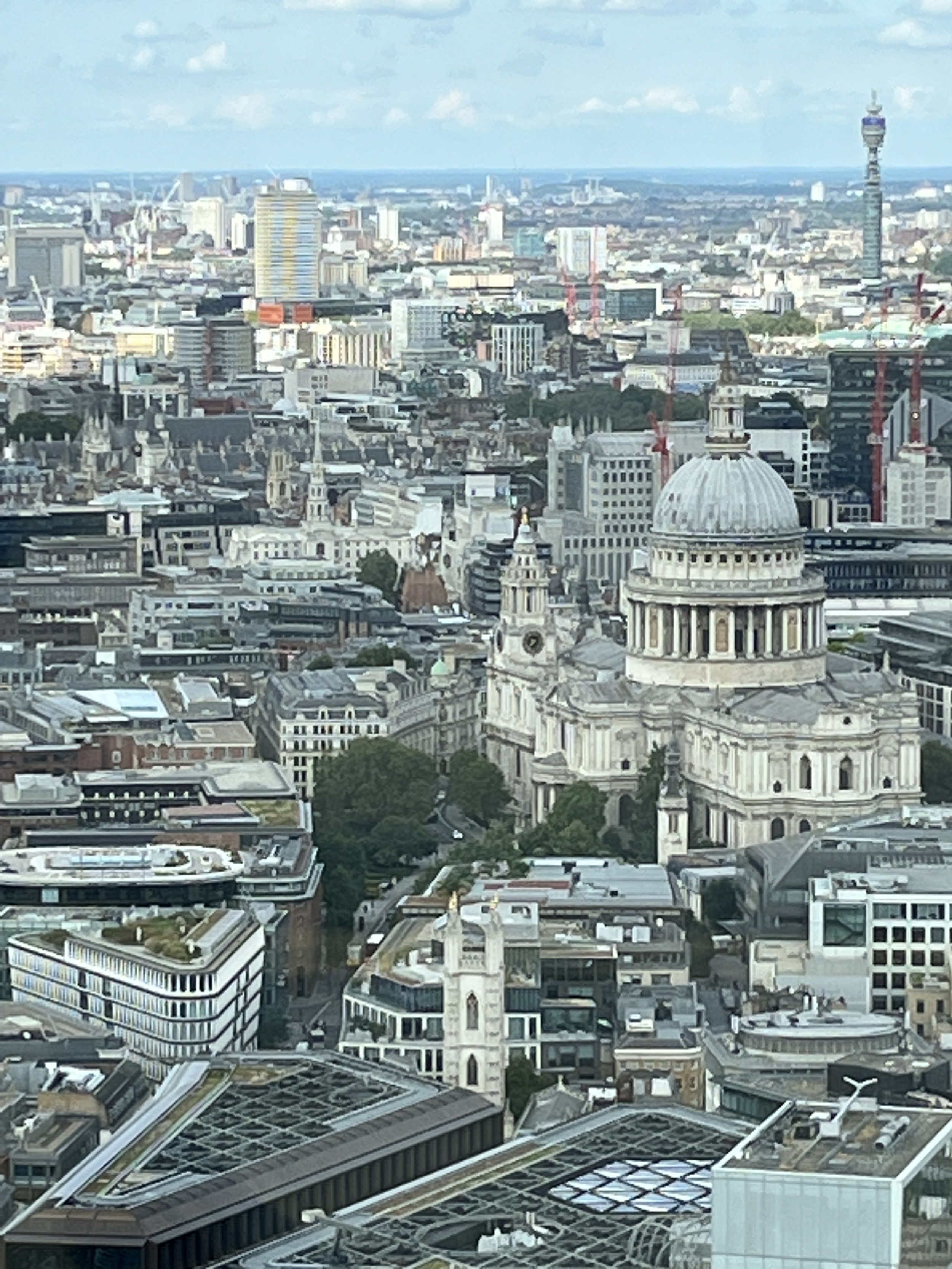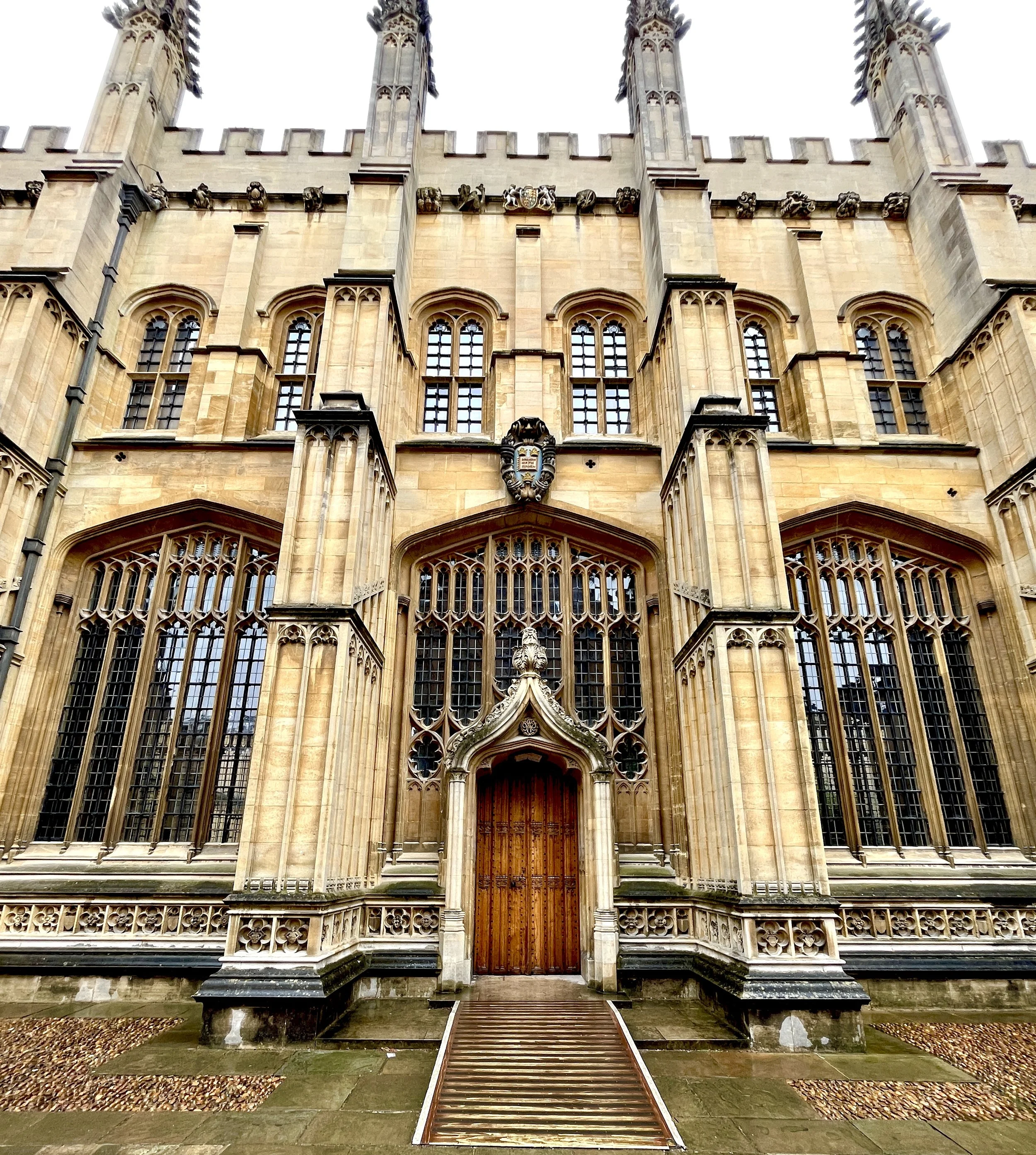England: Wet, but beautiful!
London, Oxford, Warwick Castle and Shakespeare’s home in Stratford on Avon
It’s not unusual for it to rain almost the entire time you’re in London, but when the sun makes an appearance it’s magic! I’d left Sydney in winter where it was 18 C and raining, only to arrive in London’s summer of ‘23 where it was also 18 C, and raining! The lesson for traveller’s – as if you didn’t already know – is that with climate change, there are no more reliable givens where seasons are concerned.
London, for me, has a very distinctive vibe. It’s difficult to pinpoint why this is so. Sometimes I wonder if I’d get the same ‘high’ if I hadn’t grown up an Antipodean within an education system whose compass centred squarely on this, the ‘Mother Country.’ In Germany, there’s a connection ‘to place’ that’s based on my childhood memories in which the physical environment and family connections speak of home, whereas in England there are echoes of every aspect of my high school education. History, art and literature were all taught from an English perspective. Would I feel the same about London, were that not the case? Have you been to London? What’s your gut reaction to this city?
The images below track my visit. Of course, I started with a few historic London pubs, that’s a given, right? Then, a visit to one of those iconic upmarket London stores, not Harrod’s this time, but Liberty’s with its geometric Tudor-style façade, lovely goods, and even ‘lovelier’ prices. It was summer so a stroll through the Victoria Embankment Gardens and a quick squint at the impressive architecture of the area is a lovely start to a walking tour.
The Royal Courts of Justice are a magnificent example of British Neo Gothic architecture. They’re open to the public (but photography is forbidden). Whilst there, I watched the conclusion of a case being tried by a steely-eyed judge. The judgement he delivered through sagging jowls was lent authority by a powdered wig that slipped slightly sideways as he rose and left the court. Then, I almost had to hold my fingers to my ears as two sets of female lawyers and barristers in hard heels left the courtroom, their footfall thundering down the hallowed halls like a platoon of soldiers on a mission.
Near the courts on Fleet Street, you’ll see a magnificent dragon statue atop the Temple Bar Memorial that stands at the site of London’s former city gates. Dragons are symbolic in London and were used to mark out the boundaries of the city. This one is awe-inspiring; so ‘alive’ with muscular tension that it seems ready to take flight. Nearby, is Temple Church where the Magna Carta was drafted.
London’s new Sky Garden is a must for spectacular views across the city in which glass and steel modernity competes with heritage Neo-classical and Victorian Neo-Gothic architecture. Hiding in narrow lanes are sculptures, intricate stone masonry, and art such as the colourful women’s portraits I found displayed opposite the Sky Garden, and the historical collection of footwear at Wren’s St Margaret Pattens church. This was a guild church for basket and patten makers. A patten, is a structure like a platform that fits ‘around’ a shoe to hold the wearer – her shoes and gown – above the mud and grime typical of the city’s streets in bygone eras. The patten-makers’ motto was, ‘Women receive support from us’. The old notice at St Margaret’s door for decades read, ‘Will the Women remove their patterns before entering the Church and the Men wipe their shoes on the mat.’ I’m reminded of how lucky we are to have relatively clean streets, sanitation, garbage collection and stormwater drains.
On the way to Borough Markets, one of London’s largest and most pricey, I stopped at a French alfresco restaurant called Boro Bistro and devoured escargots et un croque monsieur. In that area there’s also Shakespeare’s Globe Theatre and its interesting gift shop to explore, or a show to see if you book early enough.
Nearby, is an unassuming street on which signs front an area known as ‘Crossbones Graveyard’ – an infamous site that is still being developed as a Remembrance Garden to acknowledge the history and significance of the area and the estimated 15,000 women, children and men who lived, died and were buried here at Bankside starting in medieval times and continuing during those years when this was the most impoverished and lawless district of London. It was especially renowned for its many brothels. The signs highlight milestones in the site’s history starting in 1107 when it became part of the Diocese of Winchester. In 1161, its bishop set 39 rules governing the many brothels or ‘stew houses’ of the time. One of these was that, ‘A woman who lives by her body shall have free license and liberty to come and go as she pleases…” This seemed to offer some protection although a London survey of 1598 noted that: ‘These single women, also known as the Winchester Geese, were forbidden the rites of the church and excluded from Christian burial.’ Although Henry VIII tried to close them all down in 1546, they continued until Cromwell and his Puritans did a better job, also shutting the doors of the area’s bear pits and theatres.
Nevertheless, the cemetery part of the site continued its infamy due to the Resurrectionists for whom it was a lucrative quarry. In my book, I mention an iron coffin offering ‘safety for the dead’ displayed in the underground passages at St Brides near Fleet Street. Advances in medical research at the time required an abundant supply of cadavers and the easiest place to find them to sell to universities, was to dig up the freshly buried. Some Resurrectionists even found less ‘strenuous’ ways to come up with corpses. Two them were hanged for murder. One wonders what happened to their bodies.
Over the years, development proposals were fought off, but 1791 saw the establishment of a charity school for boys and then in 1819, St Saviour’s National Free School for Girls opened its doors. In 1831, the school registered a complaint concerning the state of disrepair of what was left of the burial ground; ‘up to ten bodies were visible through a grate’. The last burial took place in 1853 and in 1896, St Saviour leased the site to a short-lived, steam-driven fairground (it was too noisy for the neighbourhood).
In 1991, archaeologist excavated 148 skeletons and not long after, playwright John Constable began work on his popular and enduring work, The Southwark Mysteries. Among other venues, it was performed at Shakespeare’s Globe, only a five-minute walk from the site.
In 2014, the Dean of Southwark Cathedral performed ‘An Act of Regret’ on the site and it received the church’s blessing for the first time in its long history. To this day, there’s a ‘vigil for the outcast’ at 7:00 pm on the 23rd of every month. I always find it interesting how many of us volunteer to actively tie ourselves to the past, gifting it significance, and by default, added meaning to our existence.
Among the many take-aways here is that a community is so much more than the sum of its parts, that poverty breeds tragedy in almost countless ways, that the church has much to answer for when, deviating from its own scripture, it ‘casts the first stone’, and not least, that we can be grateful to live in better times.
Along this section of the river Thames, is the Tate Modern displaying art that may challenge your concept of ‘art’, but even if that is so, there is much here showing how art can be used to highlight the modern human condition: our new mythologies and the way we negotiate our technologically-driven world. Here, artists question racial and gender inequality. Some highlight religious hypocrisy, while others focus on immediate social problems such as the need for affordable housing in large cities like London.
A day trip by bus through torrents of rain and gusty winds in Oxford (above) and Shakespeare’s home (below), and Warwick Castle.
London offers a range of day trips. I chose one with Golden Tours. When weeks of rain is forecasted to continue, bad weather ceases to be an excuse not to venture out, and so our tour bus was packed – every seat occupied, and ponchos handed out to all. Such day trips include Shakespeare’s home, that was once repurposed as an inn, before becoming a museum in honour of the ‘Bard.’ The house is beautifully maintained and furnished according to the time he and his family lived here. He also spent much of his time working in London. I’m so grateful for his existence and for the energy my teachers put into breathing such life and excitement into his sonnets and plays, that I now can’t imagine growing up without Shakespeare. No doubt that applied to most of the folk in the image below waiting in the rain to feel some connection with this very influential master of language, story teller and interpreter of the human condition.
In Oxford, our charming tour guide did her best to withstand the wind and rain, not so her umbrella which bore the brunt. She explained some of the history behind the places we saw, in particular those used in the Harry Potter movies. Apparently, J K Rowling spent much time here, inspired by the grandeur of the architecture: a muse for her imagination.
The tour allows time for self-exploration so there’s opportunity to visit local pubs, Tudor buildings converted into shops, and to marvel at the grand buildings that together represent quintessential Oxford. No matter if its an entire city block, or the architraves around windows and doors – wherever you look, Oxford is grand with a capital ‘G’.
Conversations with residents have been interesting as each has indicated a societal division. On one side you have those connected with the university, its associated research centres and its professional community, and on the other – the rest of the population. Some have said that the two groups tend not to socialise and perhaps that applies not only to Oxford but to any city with a very large, world-renowned university.
If you have more time, you could visit Ashmolean Museum displaying half a million years of human history and creativity. You could hire an official guide, rent a bike, go punting on the river Thames, visit Christ Church or take in a performance at the Sheldonian Theatre. If you’re visiting by car, there are castles, gardens and an animal farm to explore plus Blenheim Palace (blenheimpalace.com). This world heritage site, said to be Britain’s grandest palace, is the birthplace of Winston Churchill, and is really worth a visit (freeblenheim.com).
The bus then made its way to Warwick Castle to join a sea of poncho-clad, umbrella-wielding tourists eager to explore this impressively presented castle with its 300-year history.
I’ve never experienced anything quite so painstakingly recreated. Not only do the furniture, silk wall ‘papers,’ paintings, light fittings and drapes draw you into history, but Tussaud-style, life-like wax figures – in action and immaculately dressed in period costumes – bring the many rooms to life. Each is a specific historical figure from the various time frames in which they had some interaction with the castle. Winston Churchill as a young man is represented, so too, Henry VIII, the latter with a little humour as a somewhat anachronistic high tea is shared by all of Henry’s wives, dressed beautifully and seated in a lovely drawing room.
It’s worth reading the descriptions that accompany the displays so you don’t miss bits of historical trivia such as the origin of an intricate clock mounted on a woven silk wall over a mantle. This was once Marie Antionette’s clock. After her beheading, all her belongings were auctioned off and somehow this piece found its way here.
The castle also offers seasonal shows: check online when these are scheduled (www.warwick-castle.com). On a lower level, there’s a cafeteria-style eatery in case you get hungry, and a maze in the gardens where you can get thoroughly lost.
When in England, why not visit Warwick Castle? It’s fun for adults and children alike.
Hope you’ve enjoyed this newsletter. While I’m travelling – between now and January – I’ll switch to FaceBook to post images and travel stories. My failing computer is no longer reliable enough to produce these newsletters. It keeps shutting down allowing no time to edit. My FaceBook Page link is: https://www.facebook.com/rottenangereva
Hope to see you there.
Safe journeys,
Eva

































































